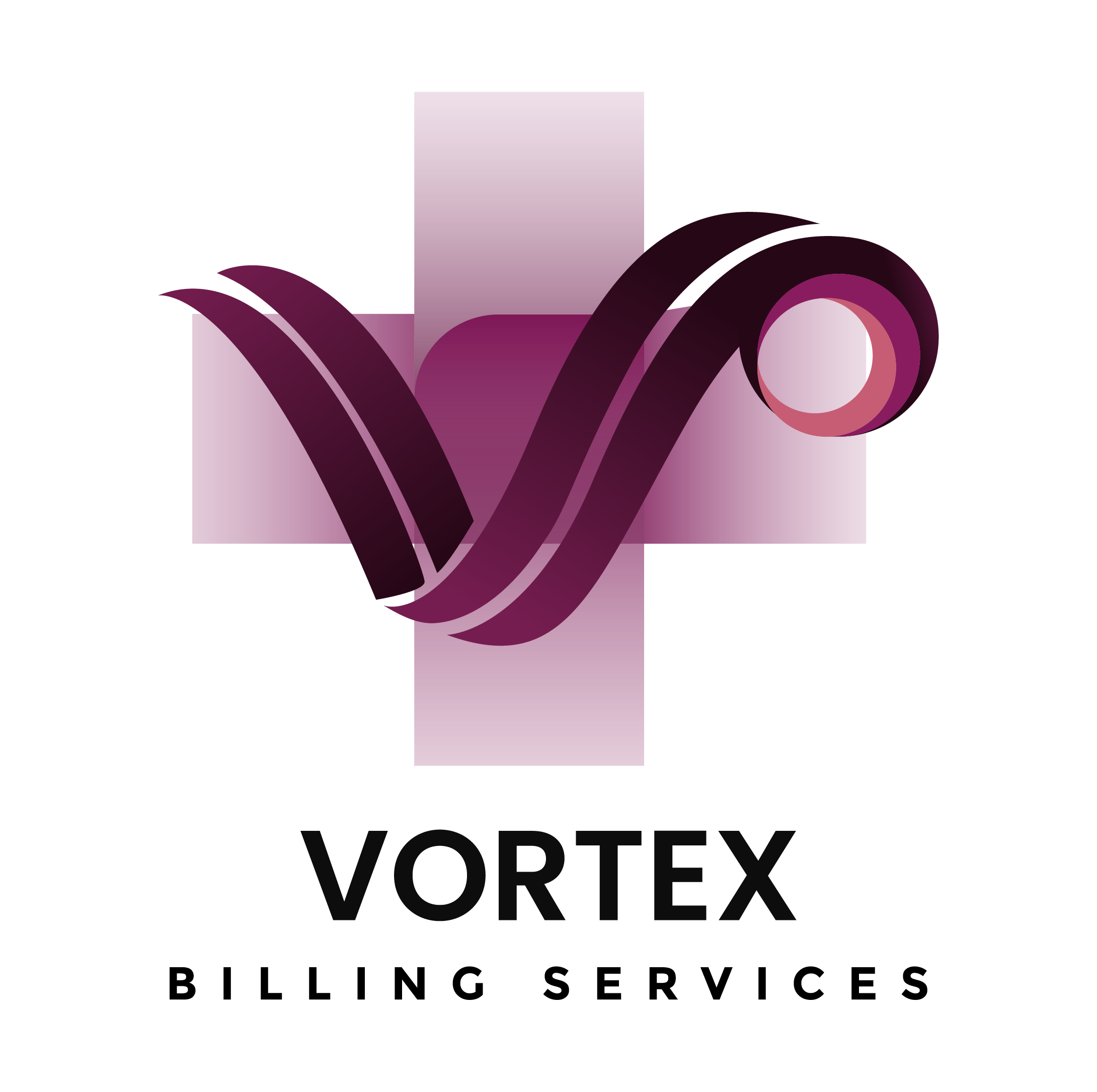The Importance of Revenue Cycle Management for Healthcare Providers
For healthcare providers across the USA, managing the financial health of their practice can be just as critical as delivering excellent patient care. One essential strategy that bridges these two areas is Revenue Cycle Management (RCM). But what is revenue cycle management? In the simplest terms, RCM refers to the end-to-end financial process that tracks patient care episodes from scheduling and registration to final payment.
Healthcare providers rely heavily on this cycle to ensure that every service rendered results in timely and accurate reimbursement. Whether you’re running a busy urban clinic, a small family practice, or scaling a specialty medical group, understanding and optimizing your revenue cycle is key to financial sustainability, regulatory compliance, and patient satisfaction.
Introduction to Revenue Cycle Management (RCM)
What Revenue Cycle Management Means in Healthcare
At its core, Revenue Cycle Management is the heartbeat of a medical practice’s financial system. It involves a series of administrative and clinical functions aimed at capturing, managing, and collecting patient service revenue. This means everything from verifying a patient’s insurance before they step into your clinic to following up on denied claims weeks after service.
RCM isn’t just a back-office task. It’s a structured workflow that ensures healthcare providers can focus on delivering care while maintaining financial health. When done right, RCM increases cash flow, reduces bad debt, improves compliance, and enhances the patient experience.
The process typically involves:
- Scheduling and registration
- Insurance eligibility verification
- Charge capture and medical coding
- Claims submission and denial management
- Patient statements and collections
- Performance analytics and reporting
For medical practices, mastering each of these components can drastically reduce revenue leakage and boost profitability.
Why Healthcare Providers Should Care About RCM
If you’re a healthcare provider in the U.S., chances are you’ve experienced delayed payments, denied claims, or compliance headaches. These are not just administrative annoyances—they directly impact your ability to operate, grow, and serve patients effectively.
Without a strong RCM system:
- You risk under coding or over coding services.
- Claims may be rejected due to simple data entry errors.
- You may miss revenue opportunities hidden in overlooked reimbursements.
A streamlined RCM system empowers healthcare providers to:
- Get paid faster and more accurately.
- Reduce the burden on front and back-office staff.
- Improve patient satisfaction through clear billing and faster resolution.
In today’s competitive healthcare market, mastering RCM isn’t optional—it’s essential.
Key Stages of the Revenue Cycle in Healthcare
Revenue Cycle Management isn’t a single event—it’s a sequence of well-defined stages that require precision and consistency. Here’s how healthcare providers should think about each stage of the cycle.
Patient Pre-Registration and Insurance Verification
The revenue cycle begins before the patient even walks into the clinic. During pre-registration, it’s crucial to gather accurate demographic information, insurance details, and authorization for treatment. This stage reduces downstream claim denials and billing errors.
Why this step matters:
- Verifying insurance coverage and eligibility prevents billing the wrong payer.
- Collecting co-payments and pre-authorizations in advance improves cash flow.
- Ensuring accuracy here prevents time-consuming corrections later.
For healthcare providers, automating this stage with EHR systems and patient portals can significantly reduce administrative overhead and errors.
Charge Capture and Coding Accuracy
Once care is delivered, every service must be accurately documented and translated into billable codes using ICD-10, CPT, and HCPCS coding systems. This is where clinical data meets financial operations.
Inaccurate coding can result in:
- Claim denials or delays
- Compliance risks due to upcoding or under coding
- Lost revenue from missed charges
Training your staff or hiring certified coders ensures that all services are correctly captured, which is vital for both compliance and revenue optimization. For healthcare providers, coding is the language that speaks to insurance companies—getting it wrong means getting paid late or not at all.
Claims Submission and Follow-Up
After coding, the claim is submitted to the insurance payer—typically electronically through a clearinghouse. But sending the claim is just half the battle; proactive follow-up is essential.
Common challenges at this stage include:
- Incorrect patient information
- Missing authorizations
- Modifier errors or mismatches with payer policies
Healthcare providers must ensure their billing team follows up on claim statuses, corrects errors promptly, and resubmits denied claims efficiently. Claims that are left unattended can cost practices thousands of dollars monthly.
Payment Posting and Denial Management
Once a claim is processed, the insurance company issues a payment or denial, which must be accurately posted to the patient’s account. This stage also includes explanation of benefits (EOBs) review and adjustment postings.
Effective denial management includes:
- Identifying denial trends (e.g., frequent coding errors)
- Appealing valid denials with supporting documentation
- Root cause analysis to prevent repeat errors
Revenue cycle teams must have clear protocols and trained staff to interpret EOBs, apply adjustments, and initiate appeals when necessary. For healthcare providers, fast and accurate payment posting helps maintain cash flow and reduces patient confusion.
Patient Billing and Collections
The final step is billing patients for their portion of the cost—co-pays, deductibles, or uncovered services. Clear and transparent communication here is essential to maintaining trust and securing payment.
Tips for effective patient collections:
- Offer online payment portals and text reminders
- Provide itemized bills with explanations
- Train staff to handle payment questions with empathy
With the rise of high-deductible plans in the U.S., healthcare providers are increasingly collecting more from patients directly. That makes this stage of the revenue cycle more important than ever.
Common Revenue Cycle Challenges Healthcare Providers Face
Even with the best intentions, many healthcare providers struggle with the complexities of the revenue cycle. The system is highly regulated, dynamic, and often under-resourced, especially in smaller practices or clinics without dedicated billing teams. Here’s a closer look at the key issues that can compromise the financial health of a medical practice.
Compliance and Regulatory Issues
The U.S. healthcare system is a maze of regulations, with HIPAA, CMS guidelines, and payer-specific rules constantly changing. A small error in documentation, privacy handling, or billing protocol can lead to hefty fines and audits.
Common compliance pitfalls include:
- Failure to adhere to documentation standards
- Incorrect application of modifier codes
- Breaches in patient data security
Healthcare providers must ensure that every element of their RCM aligns with federal and state laws. This means frequent updates to billing software, regular staff training, and routine internal audits. Non-compliance isn’t just risky—it’s expensive and potentially reputation-damaging.
High Claim Denial Rates
One of the biggest pain points for healthcare providers is dealing with denied claims. Industry estimates suggest that up to 10% of all claims are initially denied, and around 65% of those are never reworked. That’s a staggering amount of lost revenue.
Top reasons for claim denials:
- Missing or incorrect patient information
- Improper coding or lack of documentation
- Non-covered services or expired authorizations
Reducing denial rates requires a proactive approach: verifying insurance up front, ensuring coding accuracy, and establishing workflows for quick denial follow-up and appeals. Denial management is not just reactive; it’s strategic.
Lack of Staff Training and Automation
RCM is intricate, and when staff aren’t properly trained or lack the right tools, errors become inevitable. Manual data entry, outdated software, and unclear processes can choke your revenue cycle.
Healthcare providers often face:
- Staff burnout due to repetitive administrative tasks
- Errors in insurance eligibility checks
- Bottlenecks in claims processing and patient collections
Investing in automation tools like real-time eligibility verification, electronic prior authorizations, and intelligent billing platforms can significantly reduce errors. Meanwhile, training programs and certification incentives keep your staff current and confident.
Why RCM Matters for U.S. Healthcare Providers
Revenue Cycle Management isn’t just about getting paid—it’s about sustaining the entire patient care ecosystem. For healthcare providers, especially those in competitive or value-based care environments, RCM is a strategic asset that fuels growth and supports patient-centered services.
Improved Financial Performance
An optimized revenue cycle directly improves cash flow, reduces days in accounts receivable (A/R), and lowers the percentage of bad debt. Practices that streamline their RCM see faster reimbursement times and fewer write-offs.
RCM enables better financial forecasting, which helps in:
- Budgeting for staff, equipment, and expansions
- Managing vendor relationships and supply chains
- Investing in patient engagement and wellness programs
Healthcare providers who take control of their revenue cycle have a clear advantage in today’s unpredictable economy.
Enhanced Patient Satisfaction
Billing frustrations are a leading cause of negative patient experiences. From confusing medical bills to surprise charges, poor billing practices can erode trust. RCM ensures patients get clear, timely, and accurate information.
What patients want:
- Upfront cost estimates
- Flexible payment plans
- Simple online billing options
By improving financial transparency, healthcare providers build stronger relationships and foster patient loyalty. When billing is stress-free, patients are more likely to return and refer others.
Greater Administrative Efficiency
Effective RCM frees up valuable time for administrative staff to focus on patient engagement, operational improvements, and compliance. It also provides healthcare providers with insights into which processes are working—and which aren’t.
Key efficiency wins include:
- Fewer billing-related calls and complaints
- Faster resolution of claim issues
- Easier end-of-month financial reporting
When your billing cycle runs like a well-oiled machine, your entire operation benefits.
Benefits of Outsourcing Revenue Cycle Management
For many healthcare providers, managing RCM in-house can be overwhelming, especially without a large or experienced team. Outsourcing to a specialized RCM partner offers access to scalable, expert-led solutions that can transform your financial operations.
Cost-Effective and Scalable Solutions
One of the biggest benefits of outsourcing is reduced overhead. You don’t need to hire, train, or manage a full-time billing team. Instead, you get a team of experts at a fraction of the cost.
Benefits include:
- Lower staffing and software expenses
- Predictable monthly service fees
- Ability to scale with patient volume growth
Outsourcing is especially valuable for new and expanding practices that need to focus on patient care rather than billing logistics.
Access to Specialized Expertise
Medical billing and RCM firms stay on top of the latest regulations, payer changes, and coding updates. They bring a depth of knowledge and experience that’s hard to replicate in-house.
These experts help with:
- Clean claim submission and reduced denials
- Appeals and resubmissions
- Regulatory and payer compliance
Healthcare providers who outsource RCM can tap into this expertise to improve performance while minimizing risks.
Focus on Core Medical Services
Perhaps the most valuable benefit of all: you get to focus on what you do best—caring for patients. Outsourcing RCM allows clinicians and admin staff to spend less time worrying about finances and more time delivering excellent care.
This leads to:
- Improved clinical outcomes
- Higher staff satisfaction and retention
- Stronger community and patient relationships
How to Choose the Right RCM Partner for Your Practice
Not all RCM providers are created equal. Choosing the right partner can make or break your revenue outcomes. Healthcare providers must consider not only cost but also transparency, technology, and support when evaluating potential vendors.
Transparency and Compliance in Billing
You want a partner who offers full visibility into your billing data—not a “black box” operation. Ask for:
- Real-time dashboards and reports
- Clear policies for handling denials and appeals
- HIPAA-compliant data handling protocols
Healthcare providers should also check for certifications like AAPC or AHIMA, which show that a vendor takes compliance seriously.
Technology Integration and Reporting Tools
Modern RCM firms should offer cutting-edge technology that integrates with your EHR and PM systems. Look for tools that offer:
- Automated eligibility checks
- Online payment portals for patients
- Detailed revenue performance reports
These tools allow you to monitor KPIs like days in A/R, denial rates, and patient collection percentages in real-time.
Proven Track Record and Client Support
Ask for references and case studies. Has the vendor worked with practices like yours? How responsive is their support team?
Check for:
- Positive reviews and long-term client relationships
- 24/7 availability or designated account managers
- Experience with U.S.-based practices and payers
For healthcare providers, a reliable RCM partner is not just a vendor—it’s an extension of your team.
The Role of Technology in Modern Revenue Cycle Management
Technology is not just transforming how care is delivered—it’s revolutionizing how healthcare providers manage their finances. Revenue Cycle Management has evolved beyond spreadsheets and phone calls. Today, smart systems, automation, and analytics tools play a central role in optimizing revenue outcomes.
AI, Automation, and Cloud-Based Solutions
Artificial Intelligence (AI) and automation are reducing manual errors, increasing efficiency, and streamlining workflows across the entire RCM process. Tasks that once took hours—like insurance eligibility checks, claim status updates, or coding validation—can now be completed in minutes.
Key uses of AI and automation in RCM:
- Predictive analytics to identify underpayments
- Auto-coding tools to reduce human error
- Chatbots and virtual assistants for patient billing questions
Cloud-based RCM solutions offer another advantage—scalability. Practices can grow without worrying about system limitations or costly infrastructure upgrades. For healthcare providers, this means reliable access to data from anywhere, whether managing multiple clinics or working remotely.
Real-Time Analytics and Dashboards
Understanding your financial health shouldn’t require a call to your billing team. Real-time dashboards offer healthcare providers immediate insights into revenue performance, claim denial trends, and patient balances.
Common KPIs tracked with RCM dashboards:
- Clean claim rate
- Average days in A/R
- Patient collection rate
- Denial rates and reasons
With these tools, you can spot issues early, make data-driven decisions, and respond proactively rather than reactively.
Securing Patient Data and HIPAA Compliance
As technology use increases, so does the responsibility to protect sensitive patient data. HIPAA compliance is non-negotiable, and breaches can lead to serious legal and financial consequences.
Best practices for data security:
- Encrypt all patient information
- Implement multi-factor authentication
- Partner with RCM vendors that are HIPAA-certified
For healthcare providers, safeguarding patient trust is just as important as collecting payments. Using secure and compliant platforms ensures that trust is maintained at every touchpoint.
Tips to Improve Your In-House Revenue Cycle Management
Not every medical practice is ready to outsource RCM. For those managing billing internally, there are proven strategies to increase efficiency, accuracy, and cash flow. A little fine-tuning can make a huge difference.
Staff Training and Certification
An untrained team is a liability in the RCM world. Errors in coding, documentation, or claim submission can lead to delays, denials, and lost revenue.
Steps to build a high-performance billing team:
- Encourage certifications through AAPC or HBMA
- Conduct monthly RCM training sessions
- Review common denial reasons and how to avoid them
The more your team knows, the fewer mistakes they’ll make—and the faster you’ll get paid.
Regular Audits and Process Evaluations
Routine audits help healthcare providers identify gaps in workflow, underpayments, or potential compliance violations. It’s like a routine check-up for your revenue cycle.
Audit tips:
- Use a mix of internal and external reviewers
- Focus on high-risk areas like coding and modifiers
- Create actionable reports and implement improvements
Audits not only prevent revenue loss—they help you stay ahead of regulatory changes and payer requirements.
Establishing Clear KPIs
You can’t manage what you don’t measure. KPIs (Key Performance Indicators) are essential for tracking your revenue cycle’s effectiveness.
Essential KPIs to monitor:
- First-pass resolution rate
- Time to payment from claim submission
- Denial resolution rate
- Patient satisfaction with billing experience
Define monthly benchmarks and share them with your team. Visibility and accountability are game-changers in revenue cycle performance.
Real-Life Case Studies: Healthcare Providers Who Transformed Their RCM
Sometimes, the best way to understand the power of RCM is through real-world examples. Here are two healthcare providers in the U.S. who successfully transformed their revenue cycles—and saw impressive results.
From Paper Billing to Digital Efficiency
Case Study: A Pediatric Clinic in Texas
This family-owned clinic struggled with delayed payments, stacks of paper bills, and frustrated parents. After adopting a cloud-based RCM system and automated eligibility checks, they reduced claim denials by 35% and improved payment collection time by 40%.
What worked:
- Implementing an integrated billing platform
- Training front-desk staff to verify insurance instantly
- Using text and email reminders for patient bills
The shift not only improved cash flow but also boosted patient satisfaction scores, as billing confusion and errors dropped dramatically.
Reducing Denials and Accelerating Payments
Case Study: Multi-Specialty Group in California
With 15 providers across 3 locations, this group faced challenges with claim denials and inconsistent billing practices. By outsourcing their RCM to a tech-enabled billing service, they achieved a 98% clean claims rate and reduced average A/R days from 58 to just 28.
Key changes:
- Standardizing documentation across departments
- Integrating with EHR for auto-charge capture
- Weekly performance dashboards to track billing KPIs
The result? Faster reimbursements, lower overhead, and fewer billing-related complaints.
For other healthcare providers, these stories serve as proof that strategic RCM upgrades can unlock powerful gains.
The Future of Revenue Cycle Management in U.S. Healthcare
The healthcare landscape is evolving rapidly, and so is Revenue Cycle Management. From the shift to value-based care to growing patient financial responsibility, providers must prepare for a future that demands agility, transparency, and innovation.
Value-Based Care and RCM Evolution
Fee-for-service models are giving way to outcomes-driven reimbursements. This means RCM must evolve from simply “billing for services” to tracking outcomes, patient engagement, and preventive care.
What this means for RCM:
- New billing codes tied to quality metrics
- Closer alignment between clinical and billing teams
- Advanced data analytics to measure value
Healthcare providers must update their RCM processes to reflect these changes and ensure reimbursement under new models.
Patient-Centric Revenue Strategies
Patients are paying more out-of-pocket than ever before. That means your RCM system must be tailored to their needs—not just payers’.
Strategies to become more patient-friendly:
- Upfront cost estimations
- Flexible financing options
- Clear and simple billing language
As the line between patient and payer blurs, RCM must support both roles with equal care.
Conclusion
Revenue Cycle Management is the financial lifeline of every medical practice. For healthcare providers across the U.S., mastering this process is more than just administrative work—it’s a strategic necessity. Whether you’re running a solo clinic or managing a multi-location network, optimizing RCM improves cash flow, enhances patient satisfaction, and ensures long-term growth.
Incorporating technology, training your staff, understanding key metrics, and—when appropriate—partnering with expert RCM vendors can transform your practice. The most successful healthcare providers are those who view RCM not as a burden but as a business opportunity that supports high-quality care and financial health.



